PACK Product Development and Design (7): Layout and Installation of Power Battery Packs in New Energy Electric Vehicles
![]() 07/04 2025
07/04 2025
![]() 774
774
This comprehensive collection delves into the intricacies of PACK design technologies, spanning from foundational theories to real-world case studies, unveiling exclusive insights and practical tips for both industry newcomers and seasoned professionals. Thank you for your interest~

This article comprises approximately 1800 words with 8 images.
Estimated reading time: 2-3 minutes~
1. **Overall Structure of Pure Electric Vehicles**
(1) **Power System**
Pure electric vehicles (EVs) rely solely on power batteries as their onboard energy source, driven by electric motors. The power transmission mechanism is illustrated below:
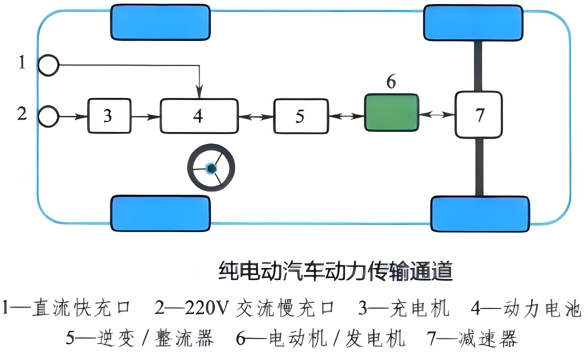
- **Battery System**: Encompasses the power battery pack (including battery cells, modules, BMS, thermal management system, etc.)
- **Drive System**: Comprises motors, motor controllers (MCU), reducers, etc., converting electrical energy into mechanical energy to propel the vehicle
- **High-voltage Control System**: Includes high-voltage power distribution boxes (PDU), DC/DC converters, chargers (OBC), etc., managing power distribution and conversion
(2) **Body Chassis**
- **Chassis Design**: Must accommodate the battery pack layout. Common layouts include the central tunnel (Area B), under the rear seats (Area D), or under the chassis (Areas A/C)
- **Body Structure**: Reinforces the battery pack installation area's collision protection, such as the sill beam and longitudinal beam, absorbing collision energy through crush structures
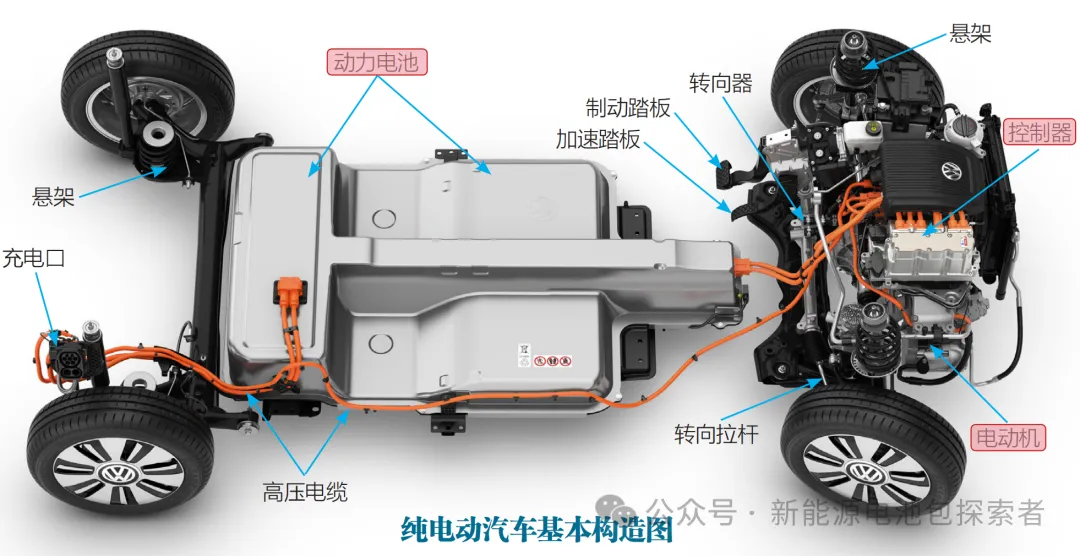
(3) **Electrical and Control Systems**
- **Vehicle Control Unit (VCU)**: Coordinates the power system, battery management system, and auxiliary systems
- **Low-voltage System**: Includes 12V power supply, in-car infotainment systems, etc.
2. **Layout Area and Requirements for Power Battery Packs**
Power battery packs, due to their significant volume and weight, necessitate careful consideration of their installation position on the EV chassis. Key factors include:
1) Estimating the required battery pack capacity based on EV passenger capacity and driving range goals, and calculating the necessary space.
2) Adhering to complete vehicle configuration requirements (e.g., trunk space) that affect battery pack layout and space.
3) Ensuring a minimum ground clearance (typically >100mm under full load).
4) Implementing protective structures (e.g., safety gap between the battery pack and floor, collision protection).
5) Meeting process assembly requirements (mechanical and electrical interfaces, assembly operation gaps).
Early EVs often modified traditional fuel vehicles by removing the engine, transmission, fuel tank, etc., utilizing the vacated space for battery pack layout.
For EVs derived from fuel vehicles, potential battery pack layout areas can be divided into six zones, A to F.
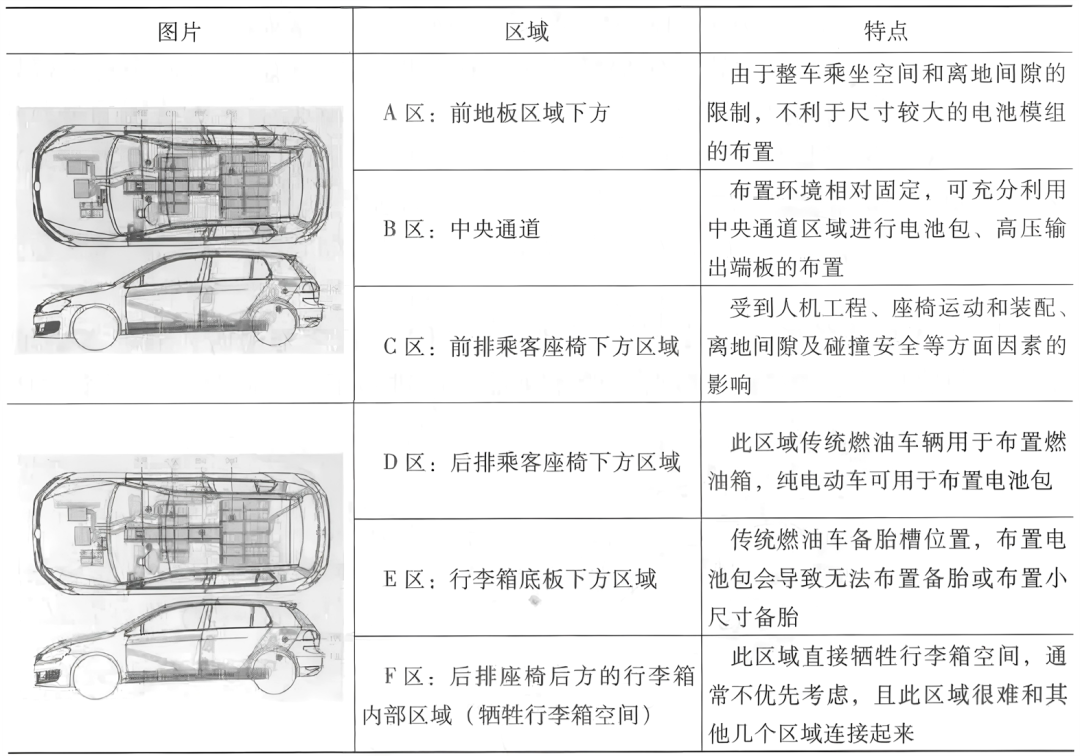
3. **Installation Position of Power Battery Pack in the Complete Vehicle**
(1) **I-shaped Battery Pack**
Primarily installed in Area B (central tunnel) and Area D (under the rear seats). The battery pack can be divided into front, middle, and rear sections, arranged in the original fuel vehicle's engine compartment, drive shaft tunnel, and fuel tank position, forming an "I" shape.
For example, the Brilliance BMW Zino 1E employs an I-shaped battery pack, offering balanced front and rear axle load distribution, a low center of gravity, excellent handling stability, and reduced single-point collision risk due to its distributed layout.
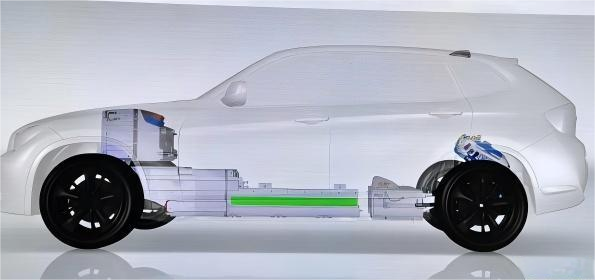
(2) **T-shaped Battery Pack**
Installed primarily in Area B (central tunnel) and under the rear seats, extending from the central tunnel to Area D, forming a "T" shape.
For instance, the first-generation Chevrolet Volt uses a 16KW·h manganese lithium battery from LG, with a range of only 64km.
I-shaped and T-shaped battery packs offer minimal modifications to the original fuel vehicle, resulting in limited driving ranges. For example, the Brilliance BMW Zino 1E uses a 27 kWh LFP battery from CATL, offering a range of only 150km.
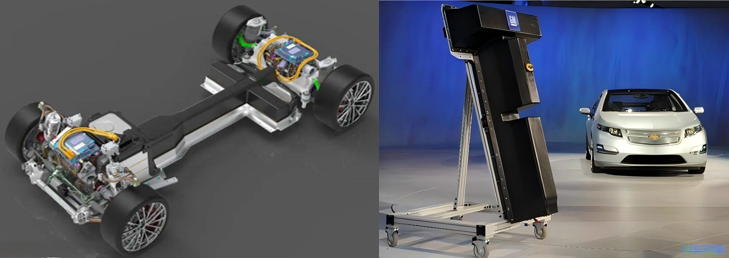
(3) **Soil-shaped Battery Pack**
Improving EV driving range generally involves:
① Increasing battery pack energy density (more challenging)
② Expanding battery pack layout space (relatively easier, by adding more battery cells)
Soil-shaped battery packs typically use the central tunnel as the main trunk, extending to Areas B/C/D on both sides.
For example, Geely Dihao EV underwent secondary chassis development, freeing up space for an extended battery pack layout. Volkswagen e-golf also uses a soil-shaped battery pack with a total power of 24.2KW·h, 320V, and 75A·h capacity.
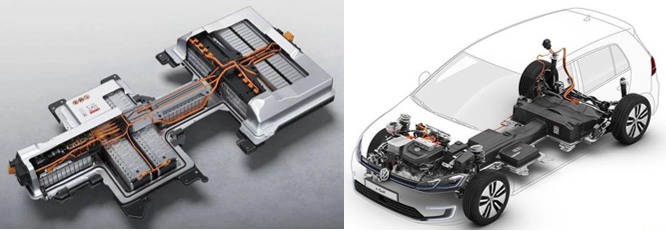
(4) **Integrated Skateboard-type Battery Pack**
Traditional fuel vehicles offer limited layout space, necessitating a new chassis design tailored for EVs to significantly enhance driving range. This is a revolutionary concept, distinct from fuel vehicle development, with the entire vehicle design revolving around the battery pack.
Tesla pioneered the integrated skateboard-type solution, placing the battery pack under the chassis (Areas A/C), laid flat between longitudinal beams.
BYD's e-platform 3.0, focusing on pure EVs, adopts CTB technology, integrating blade batteries directly, serving as both an energy source and structural component.

**Summary**:
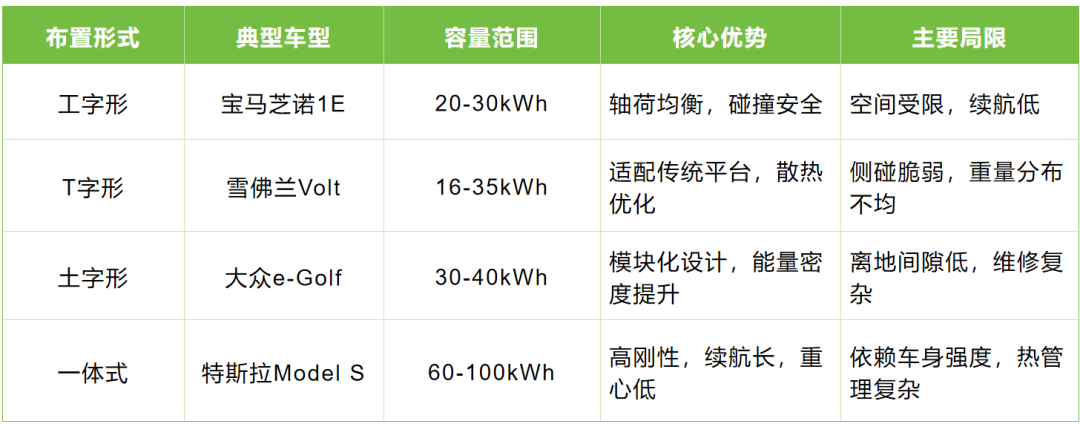
**Disclaimer**: Due to personal limitations, please feel free to correct any errors. This article is solely for learning and reference. Some images and text are sourced from the internet. If there are any copyright issues, kindly inform us promptly, and we will remove them immediately without commercial use!







